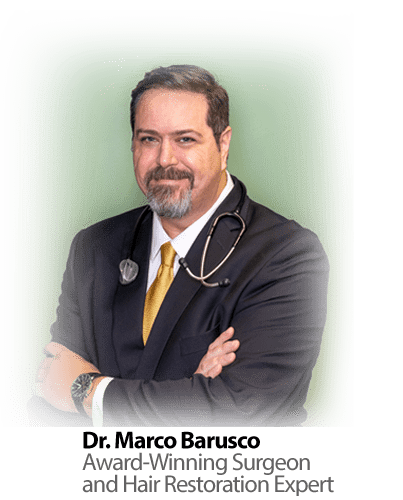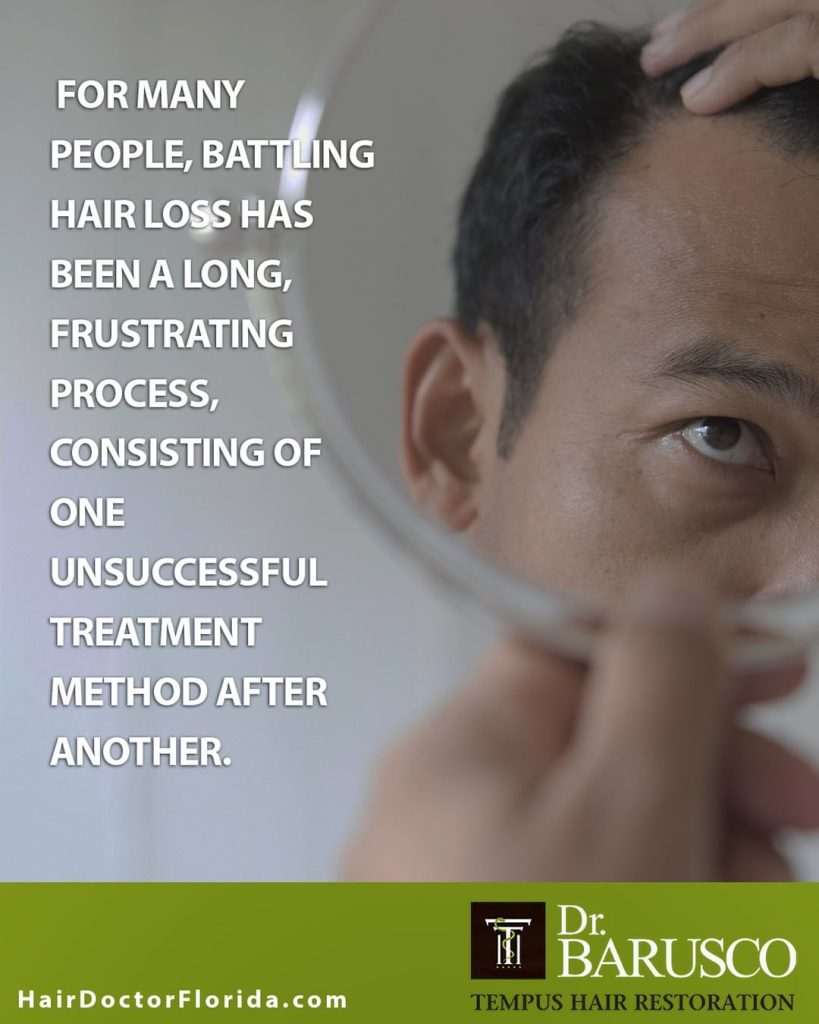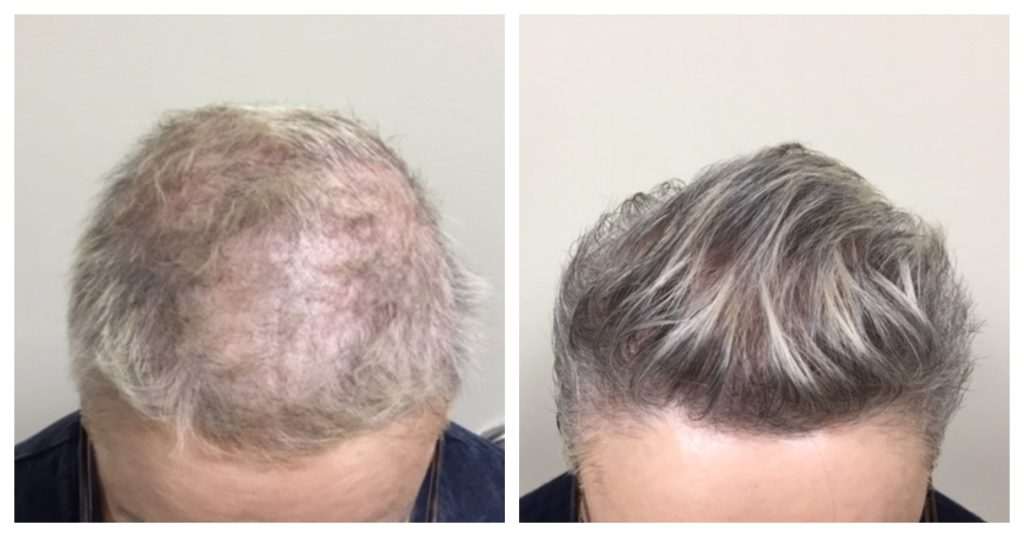You may be surprised to learn that the field of surgical hair restoration is not regulated by either the United States government or the medical community. According to the American Hair Loss Association, any licensed physician can legally perform hair transplant surgery without any prior surgical training or accreditation of any kind. While this is true for any medical specialty (theoretically, any licensed physician may do any medical procedure they want), you won’t see a physician trained in plastic surgery performing a hernia operation. They reason why is that most physicians know their limitations and train extensively before they feel that they are proficient in a given procedure.
However, hair transplantation is pitched to physicians by device manufacturers in the United States and abroad as a simple procedure that does not need to be performed by a physician. Instead, it may be done by trained “technicians.” Nothing could be further from the truth. Hair transplantation is a complex procedure that requires a trained physician and a trained team in order to be successful. Otherwise, horror stories occur. And these have become more common in the last few years.
Under these circumstances, the typical advice of “do your research” is all the more important and challenging for those considering a hair transplant. Even minimally invasive hair restoration procedures are actually surgery requiring medical expertise. Unlike buying a car, most people don’t have experience when deciding who to trust with performing hair transplant surgery. Because we at Tempus Hair Restoration recognize that knowledge is power, a well-informed consumer is one who will ultimately be the best-satisfied with the results. Toward this goal, we offer the qualities to look for, as well as warning signs of who to avoid.
The first area to navigate is finding reliable sources of information. As WebMD acknowledges, “Social media, radio, television, and traditional print media market to the vulnerable hair loss consumer a more risk-free, guaranteed product as opposed to the highly specialized cosmetic surgical procedure it is.” With today’s emphasis on convenience and instant gratification, such pitches have great appeal to people who want a full head of hair in the least amount of time and at the cheapest price. Patients have been lured into going out of the U.S. to have their procedures done. Any marketing that makes it seem everyone will get the same results – despite the required disclaimer that results are not typical – does not have education as its goal.
One excellent starting point is the International Society of Hair Restoration Surgery (ISHRS) – a global non-profit medical association and the leading authority on hair loss treatment and restoration. With more than 1,000 members throughout 70 countries, the ISHRS is dedicated to promoting the highest standards of medical practice, medical ethics and research in the medical hair restoration industry.
Dr. Marco Barusco – Founder and Chief Medical Officer of Tempus Hair Restoration – is a Fellow of the ISHRS. This is a distinction that is only given to those who achieve certain landmarks on teaching and leadership. Currently, fewer than 10% of the ISHRS members are Fellows. In addition, Dr. Barusco is an active leader in the ISHRS, with various committees participations, lectures ministered and surgeries performed in the ISHRS’ workshops and congresses.
The ISHRS website is written in consumer-friendly language, easily accessible to those seeking objective information. A section specifically for patients consists of the following:
- Types of Hair Loss
- Treatments for Hair Loss
- Patient Stories
- Getting Started
- Consumer Advocacy
- Video
- Glossary
So, whose advice should you trust in finding a hair transplant surgeon?
You may be surprised to learn that the American Hair Loss Association recommends avoiding referrals for a hair restoration surgeon from your dermatologist or family practitioner.
“While your family doctor or dermatologist might mean well, the fact is that most physicians in this country know very little about the scope and pitfalls of this demanding cosmetic procedure. Unless your doctor has personal experience with the hair transplant physician he [or she] is recommending, our advice would be to say thanks, but no thanks.”
This is good advice. If you ask your dermatologist or primary care doctor for a referral to a hair transplant surgeon, make sure you ask if they know the work of the doctor they are recommending. This is very important. Dr. Barusco receives numerous patients who have been referred by other physicians of many specialties. Many of these doctors are actual patients of Dr. Barusco, so they know first-hand the quality of his work.
Finding a surgeon
Again, choosing a hair transplant surgeon based solely upon the amount of advertising the doctor or practice does is no guarantee of good results. The ISHRS provides a Find a Doctor list, which is maintained and updated with the name, location, contact information and link to the ISHRS member page of each member.
In conducting research on individual surgeons, the ISHRS recommends learning about the surgeon’s training, credentials and experience in the field of hair restoration. This is important, as a plastic surgeon may perform great liposuctions and facelifts and be an authority on these procedures, but no experience in hair restoration surgery. Be certain the surgeon will give you the names and contact information of patients you can talk to, as well as show you several before-and-after photos to ensure you like the aesthetic quality of their work.
Questions you should ask a hair restoration surgeon
Our July 8, 2019 blog post – “Undoing the Damage of a Bad Hair Transplant” – includes the following questions:
- Who will evaluate my hair loss and recommend a course of treatment? What is their education, training, licensure, and experience in treating hair loss? Only physicians, Physician’s Assistants and Nurse Practitioners are legally allowed to diagnose a patient and to recommend medical treatments. Otherwise, the person recommending procedures and/or treatments is practicing medicine without a license, a Felony crime in Florida and many states.
- Who will be involved in performing my surgery, what role will they play, and what is their education, training, licensure, and experience performing hair restoration surgery?
- Will anyone not allowed by the State Medical Board be making incisions or harvesting grafts during my surgery? If so, please identify this person, explain their specific role and why they are legally permitted to perform it.
- Is everyone involved in my surgery covered by malpractice insurance?
Once you are at the consultation, make sure all of your questions are answered to your satisfaction and demand to see a physician. If the surgeon who would be performing the procedure isn’t in the office at the time of your consultation appointment, leave. At Tempus Hair Restoration, every prospective patient meets with Dr. Barusco – whether the consultation is in-office, or by video conference. The consultation is the time during which you should make sure you have a clear understanding of what can be accomplished for your unique situation.
The in-office consultation is also the time when you should take note of how the office is run. Is the office staff helpful, considerate and willing to answer questions about billing, insurance, etc.? Is the office or clinic neat and clean?
One very important point we always emphasize is that you should never feel pressured to make a decision before you’re ready. Ethical practices do not use high-pressure tactics to have you sign a contract. You should feel comfortable taking all the time you need.
What to avoid
As we noted earlier, mass-market hair clinics that advertise heavily can mislead those unfamiliar with ethical practices and safe surgical procedures. In particular, the widespread use of robotic and power-assisted devices places patients at risk of disastrous outcomes – especially when they’re used by technicians to perform procedures. As the ISHRS website notes:
“Only a doctor has been trained to maintain high patient safety standards, care for unexpected medical problems, has medical board oversight, and has taken an actual oath to keep your best interest in mind while you’re in his or her care. If your doctor allows technicians to do surgery for them, they are neglecting their oath, and you should shop elsewhere!”
We also invite you to read Dr. Barusco’s insightful post about the risks of robot-assisted hair transplant surgery. Dr. Barusco relates his experience with an ever-increasing number of patients seeking help whose initial procedure was botched – sometimes irreversibly – by unqualified personnel using such devices.
“Over the years, it would be fair to say that I’ve developed a unique perspective on these machines. I closely follow their development and release in our industry. First, they were aimed to experienced, competent hair restoration surgeons. Then, since many of us did not see the advantages of having them, the number of machines sold was too small to sustain business and profit, and they started advertising to cosmetic surgeons, plastic surgeons, family practitioners and others who had no training and no experience in hair restoration surgery. These doctors are pitched a quick-profit procedure that they really do not have to understand, since one company supplies the technicians to do all of the work, and the other will train them on how to operate the robot and its software—as if this did not require good cosmetic sense and a deep understanding of hair loss and hair restoration. The result? Many unhappy patients.”
The next step of your hair restoration journey
Many people – especially men – typically don’t want to talk about the emotional toll that hair loss takes. Yet this is an important factor in choosing a hair restoration surgeon. Combined with a lack of solid, objective information, making a quick decision based upon emotions can leave you vulnerable to results ranging from unsatisfactory to disastrous.
Ultimately, choose your surgeon based on experience, results and integrity. Dr. Barusco’s long list of accomplishments, his notable artistic ability and his successful surgical team make Tempus Hair Restoration a renowned practice.
Dr. Barusco also conducts virtual consultations for those who can’t travel to one of our 16 Florida locations, and our office will arrange travel and accommodations for out-of-area patients for their procedures. We invite you to learn more about our procedures, then contact us to schedule your free consultation with Dr. Barusco. We look forward to meeting you and discussing your options.



 “I know many clients who have seen major improvements by Dr. Barusco’s hands. However, the two that stand out to me are the following.
“I know many clients who have seen major improvements by Dr. Barusco’s hands. However, the two that stand out to me are the following.
